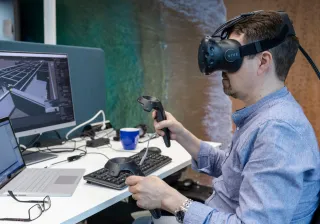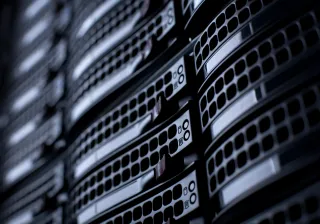The Finnish healthcare system is under increasing pressure to achieve cost savings while at the same time no one is willing to compromise the high quality of care we are used to.
The Finnish healthcare system is under increasing pressure to achieve cost savings while at the same time no one is willing to compromise the high quality of care we are used to. What to do? The answer lies in more efficient use of data and machine learning. A holistic view of the patient is needed if we want to ensure accurate diagnosis and treatment planning. That is what we need data for.
New national law on secondary use of health data is a step forward
There is a lot of information on every one of us in health and social services information systems. Besides the direct treatment of us as patients, all that information could be used more efficiently in the development of new therapies, diagnostics solutions and functional foods. The new national law on secondary use of health and social services data was recently accepted by the Finnish parliament and it complements the General Data Protection Regulation (GDPR) of the EU in defining the conditions under which data can be exploited.
Although the data collected over several decades provide excellent foundations for development work, many challenges still exist. Large amounts of it are still recorded as free-form text, a format that is hard to process further. Furthermore, there are regional differences in how the data is recorded. For example, different laboratory systems may use different codes for the same examinations. It is challenging to combine data in order to use it in clinical decision-making,but not impossible.
Decision support for emergency rooms
Let us use an example to demonstrate how data and smart algorithms might help. In an international project, we developed software tools that help a clinician in making very difficult decisions related to the treatment of people who had a brain injury, for example when slipping and falling on ice, or being in a traffic accident. When a person arrives at the emergency room, it is extremely challenging to predict how the situation might develop, and what would be the optimal action to take. Would it be wiser to have the person rest for some time, or should we operate – or might that be to risky in this specific case?
It is said that brain injury is the most complex disease in our most complex organ. To illustrate that, we may roughly estimate that the outcome is influenced by around 100 variables, that can have together 1267650600228229401496703205376 combinations! What is the combination to choose?
In order to make fast and objective choices on how to treat the patient, a doctor thus needs to take a very large amount of data into account in a critical situation. To make things worse, these data are distributed over different databases and other sources. In the project, data analytics and machine learning tools helped us here to combine all the data, visualise their relationships in a clear manner and come up with suggestions for treatment actions. This was done by using large databases of health data, capturing the treatment outcomes of thousands of earlier patients. Machine learning methods extract knowledge from these data that can then be used to help in decision making for future patients also.
The invasion of algorithms in healthcare does not mean that we would book our appointments with computers instead of doctors and nurses in the future. On the contrary, we expect artificial intelligence to do the dull background work. This leaves the healthcare professional more time for the most important – meeting the patient.




